FragmentNine’s Jeremy Lechterman and Jackson Gallagher – Convergent Light
Posted on July 8, 2021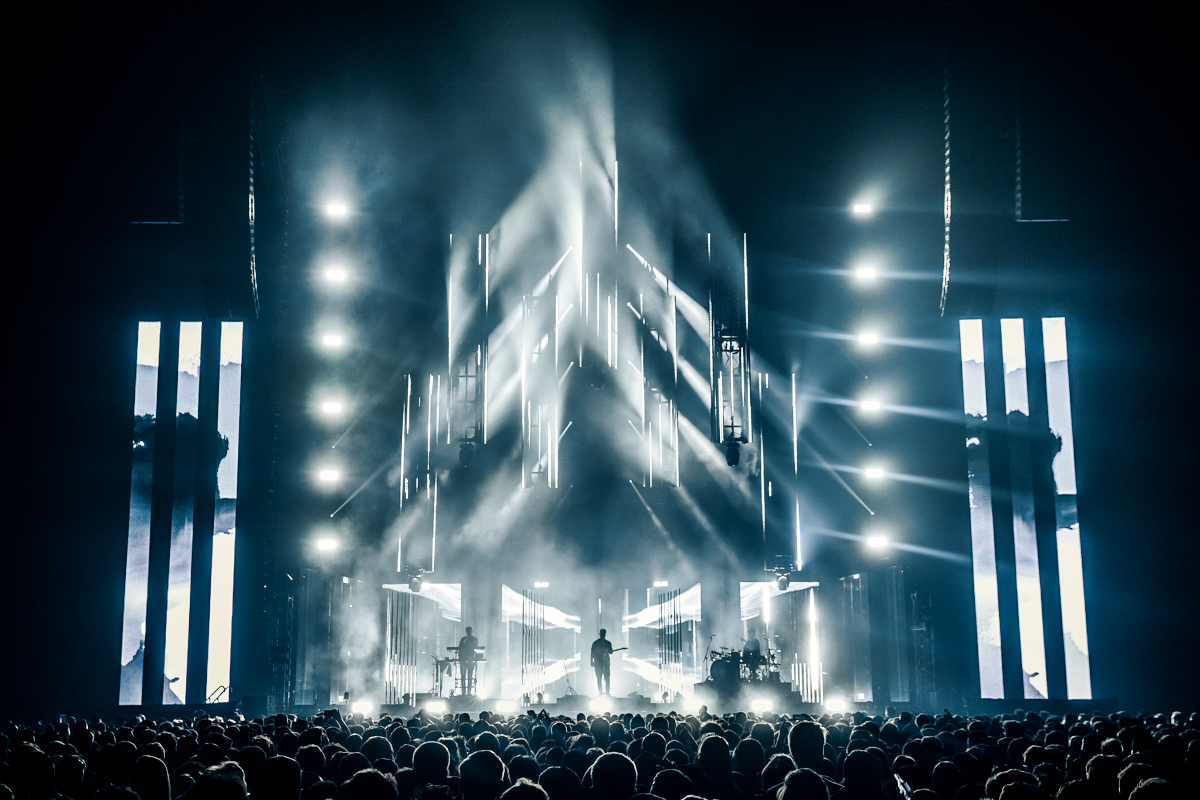
Throughout its eight year history, this column has been focused exclusively on individual designers. What better way, we reasoned, to explore the mysterious, lonely process of turning a blank page (or computer screen) into a living, breathing and vibrant design than to delve into the creative soul of the person responsible for making that magic?
Our intent was to follow the same route when we reached out to Jeremy Lechterman, a designer whose work we had long admired. We were soon convinced otherwise, however, when Lechterman brought Jackson Gallagher, his partner and co-principal at their company, FragmentNine, into the mix along with vice-principal Michael Hankowsky.
We’re glad he did, not just because this move represented the close level of collaboration among the three, who have known each other since their college days at Carnegie Mellon, but also for how it spoke to their collective design philosophy.
Lines between different design elements converge at FragmentNine, flowing into one another to the point where lighting, video and scenic pieces meld into a single visual entity.
Where does lighting end and video begin? Is this towering column a lighting or scenic piece? The answers are not always clear when a design team avoids arbitrary distinctions in pursuit of a holistic image.
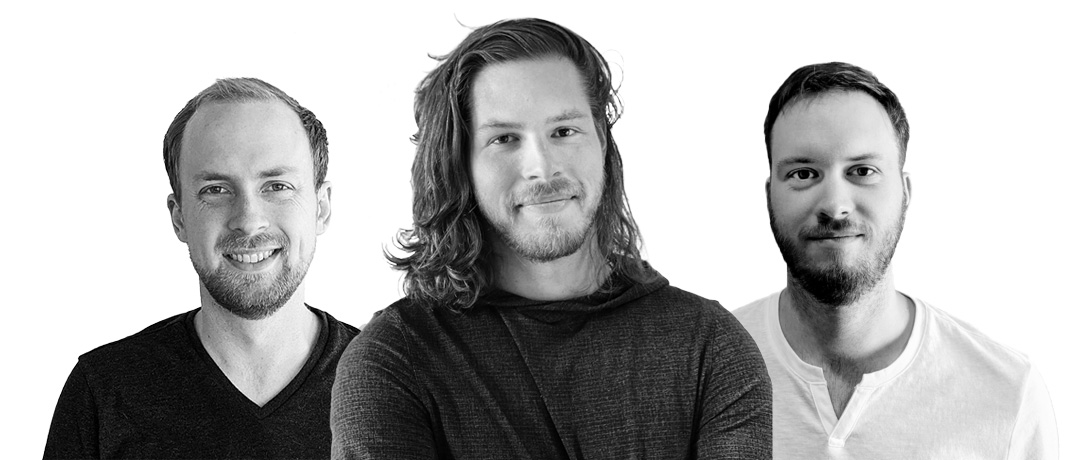
Even the separation between the onstage artists and light is sometimes swept away by the shared vision of Lechterman, Gallagher and Hankowsky. This was evident during a pre-pandemic alt- J show at Royal Abert Hall when linear fixtures and the band appeared to dance as one.
Although they freely draw on the most advanced technology, the FragmentNine team insists that their designs are first and foremost guided by creative vision. For every show, the design process begins with the intent of telling a story, something these Knight of Illumination Award winners have done for an impressive list of clients that, in addition to alt-J, includes BTS, Keith Urban, Maroon 5, Fritz and the Tantrums, Young the Giant, and during the 2020 lockdown, the NBA’s massive bubble for televised games.
We are glad this creative threesome has now shared their own story with us.
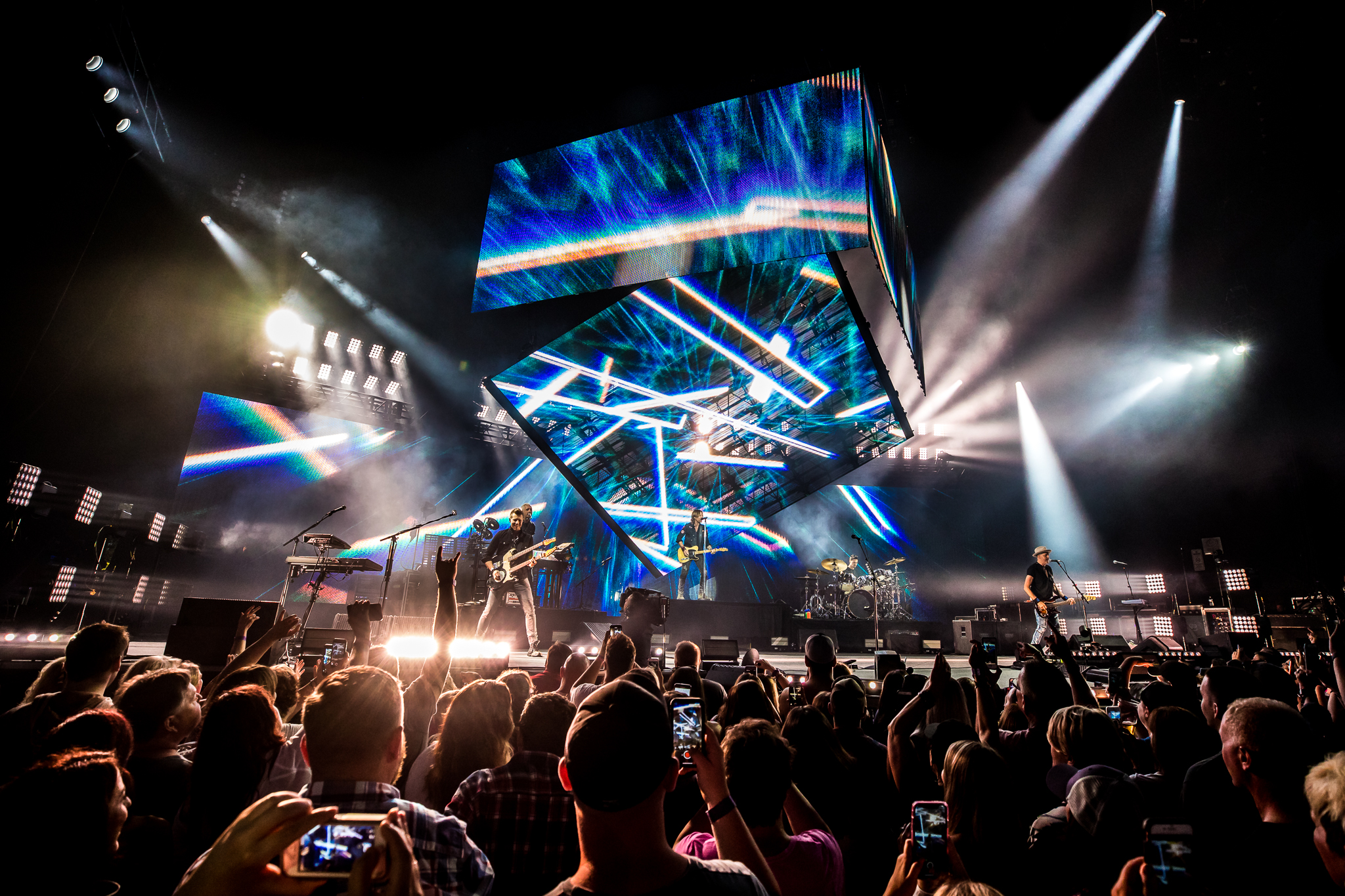
A thing we’ve always admired about your work from the earliest days, has been your ability to create big vertical designs without looking top heavy. Much of your design often lives well above the stage. How do you manage to do this without distracting from the artists on the stage itself?
“It involves a fine balance between minimalism and maximalism. We try to create a ‘larger than life’ stage picture without upstaging the artist. As long as we are faithfully enhancing the experience for the audience and not just showing off, we seem to have been able to get away with it.” Jeremy Lechterman
Staying above the stage for a moment, we were impressed by the cubic effect you created for Keith Urban’s Graffiti U by hanging massive video panels of different shapes overhead. Can you tell us a bit about why you did this?
“The goal of that show was to create a really simple structure that could tesselate and origami over the course of the show, telling different stories with each augmentation.
There was a key song, Gone Tomorrow, where we knew we wanted to trap Keith and the band inside a visual cage, so the roof and walls were born from that idea.” JL
On Walk The Moon’s Press Restart tour, you used lighting to morph the band’s chevron logo into different configurations. In so doing, you created a video wall-like effect. Are lights being used more with scenic pieces to create dynamic backgrounds? What are your thoughts on this?
“ You’ve touched on something that is at the core of the ethos of our company. We are always striving to blend lighting and video so the audience doesn’t know where one discipline stops and the other starts. We do this by designing both elements in tandem, controlling lighting elements with video and occasionally treating video elements as lights. We do this best when we are designing lighting and video because we functionally become a combined department instead of a show having a discrete lighting designer and discrete video designer.” Jackson Gallagher
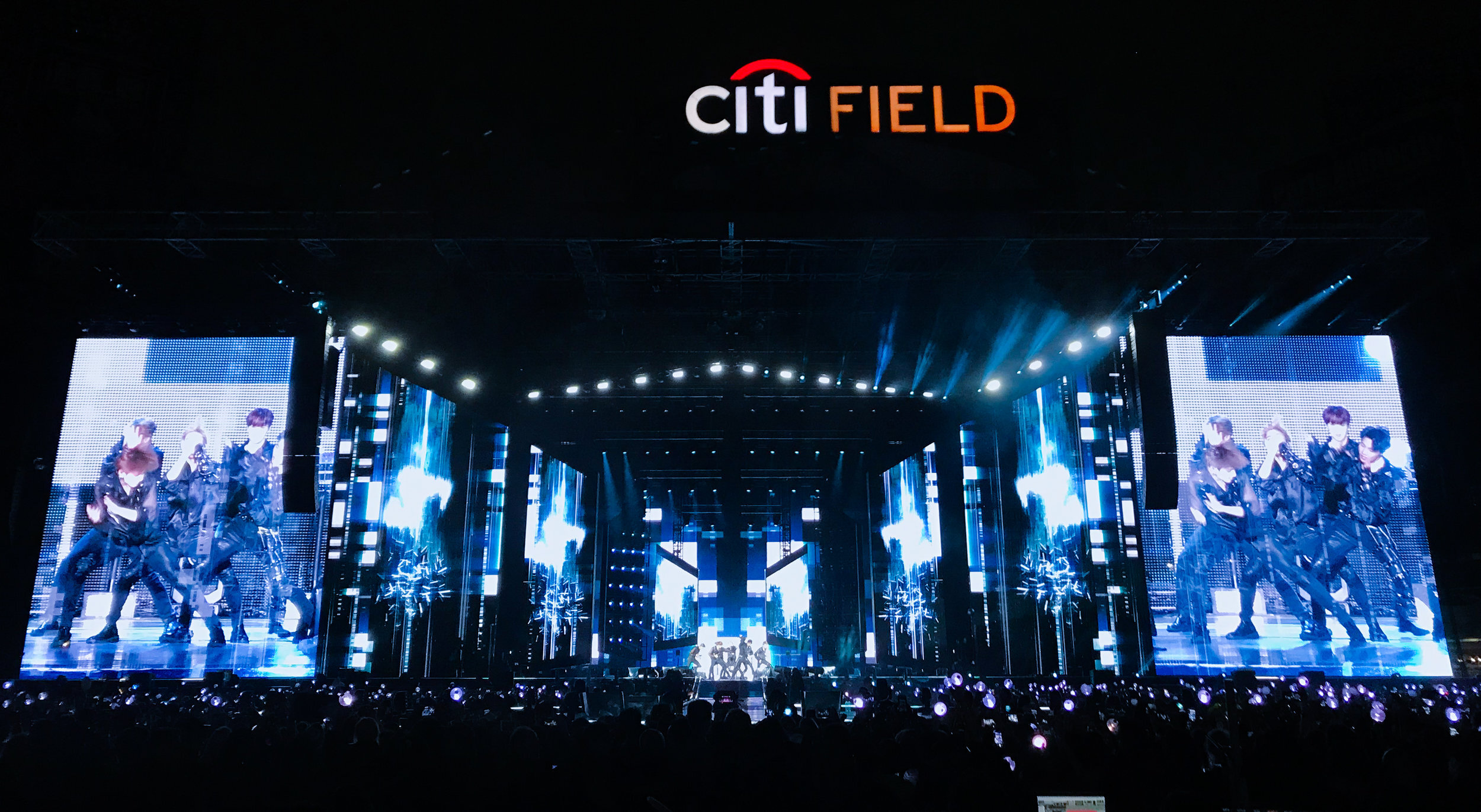
Any examples of this?
“One of our favorite examples of this was the 2017 alt-J tour. We had the forest of linear fixtures with LED screens behind them and then hybrid beam/spots behind the screens. The screens themselves were incredibly transparent which allowed a lot of light to pass through. We could have content move its way from the front of the stage to upstage through the linear fixtures, land on the LED screen, but then that same content was pixel mapped on the lights behind the wall making the content feel truly 3D and wildly emissive.” JG
You declare on your website that you operate at the “intersection of art and technology.” It’s probably impossible to pinpoint the exact location of that nexus, but can you give us an idea of how art and technology interact in your creative process? Do you think of an idea first and then look for the technology? Or do you begin by looking for ways to apply a given technology to a design?
“We always leave technology out of the conversation for as long as we can. Living at the intersection of art and technology doesn’t mean always thinking about both. We want to start out in creative La La land and come away with the best artistic direction for the project that we can.
“The intersection comes into play with how we realize that idea. We never want our work to stop at the napkin and make other people solve our technical programs. There is an art to executing a design well technically and without micromanaging. We’ve found it helpful to be involved in many steps of the process from renderings to control system design, programming, etc. Working holistically like this ensures the final product lives up to its full potential.” JG
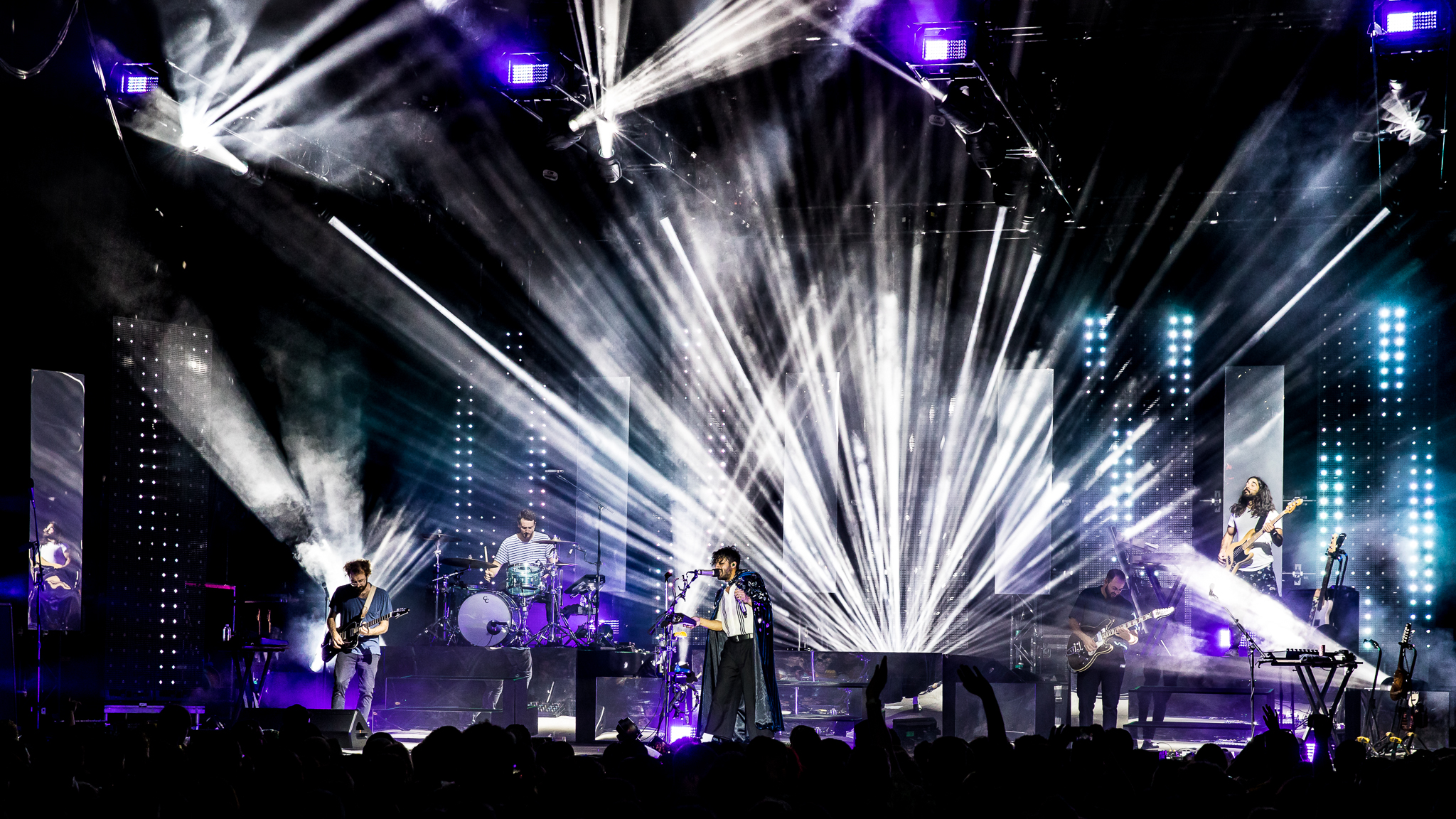
When you discover a new technology does it lead you to think in new ways? Or does it merely make it easier for you to actualize the ideas that were already in your head?
“ It depends. Sometimes it goes into our mental arsenal of ideas for future shows and
sometimes we discover new technologies only when we have an artistic problem to
solve.” JG
“It’s hard to find a balance here, we can pretty easily get bogged down wanting to explore something new or experiment. Most of the time we end up learning and adopting a new technology when we commit to it being in the show. We need the design side to drive us to explore something new.” JL
At the alt-J Royal Albert Hall show we discussed a moment ago, you merged technology and art quite effectively surrounding the band member in tall walls of light rods and creating a sense that the musicians were moving when it was the fixtures dancing. alt-J obviously appreciated that, but do you ever encounter artists who worry about technology augmenting their actions or “taking over” the stage?
“It’s a balance for every show — and that balance is different for every artist. Sometimes like with alt-J ,we get to hang out in the front for most of the show. Sometimes it’s a back and forth process, like with Keith Urban, and sometimes the artist’s persona and the fan’s desires don’t need us to step out much at all, such as with BTS.” JG
“alt -J wanted to be partially obscured to take a physical back seat, so a design which wrapped them, almost cocooned them, and allowed them to just play the music without worrying about their physicality on stage was the brief. For other artists, it’s crucial their choreography and their winks are seen by every audience member.” JL
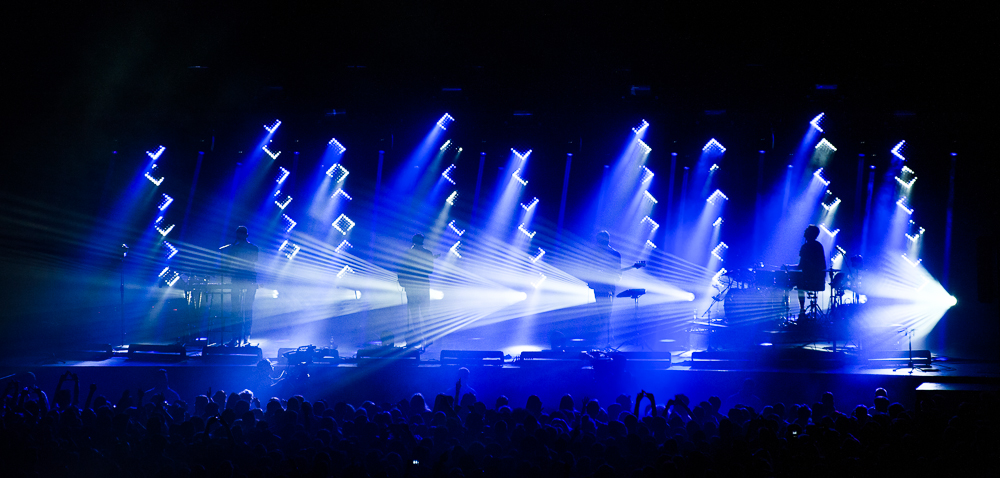
Given your use of technology on stage, what are your thoughts on the future of completely virtual shows?
“In all honesty, it’s not something we are terribly interested in. The live, communal, shared experience of concerts is our raison d’être. A lot of people are doing some really cool work with virtual shows, but I don’t see us getting involved in that anytime soon. Nothing against them though.” JG
Still, there were virtual elements to the work last year at the NBA bubble isolation zone in Orlando where you had a giant video wall wrapped around the court and simulated fans in the stands. You used thousands of individual video clips for that. What were the big lessons you learned from that project?
“ It reminded us that no show is the same and there are always edge cases. We dealt with approximately 20,000 video files and programming at times became more of a data entry
challenge than an artistic challenge. It stretched our skills in new ways which was refreshing, but it was a monster to wrangle. It was also funny that we came at this project from a theatre/concerts/linear approach which this was anything but. A sporting event is anything but linear. At times we felt like the theatre nerds in the high school cafeteria sitting at the lunch table with all the jocks and athletes so we grew a lot as entertainment practitioners.” JG
You had tremendous teamwork in the NBA Bubble project. You also must have had a lot of pressure. What’s the secret to keeping collaborations running smoothly?
“ The turning point was probably when the NBA organized an alcohol delivery service and we could have poolside Manhattans – Kidding! I’m not sure if it involves a secret, it’s more a matter of a chemistry. We had four programmers that were 100-percent interchangeable. We all worked in one show file and ran through games at the same time. That takes trust and respect.
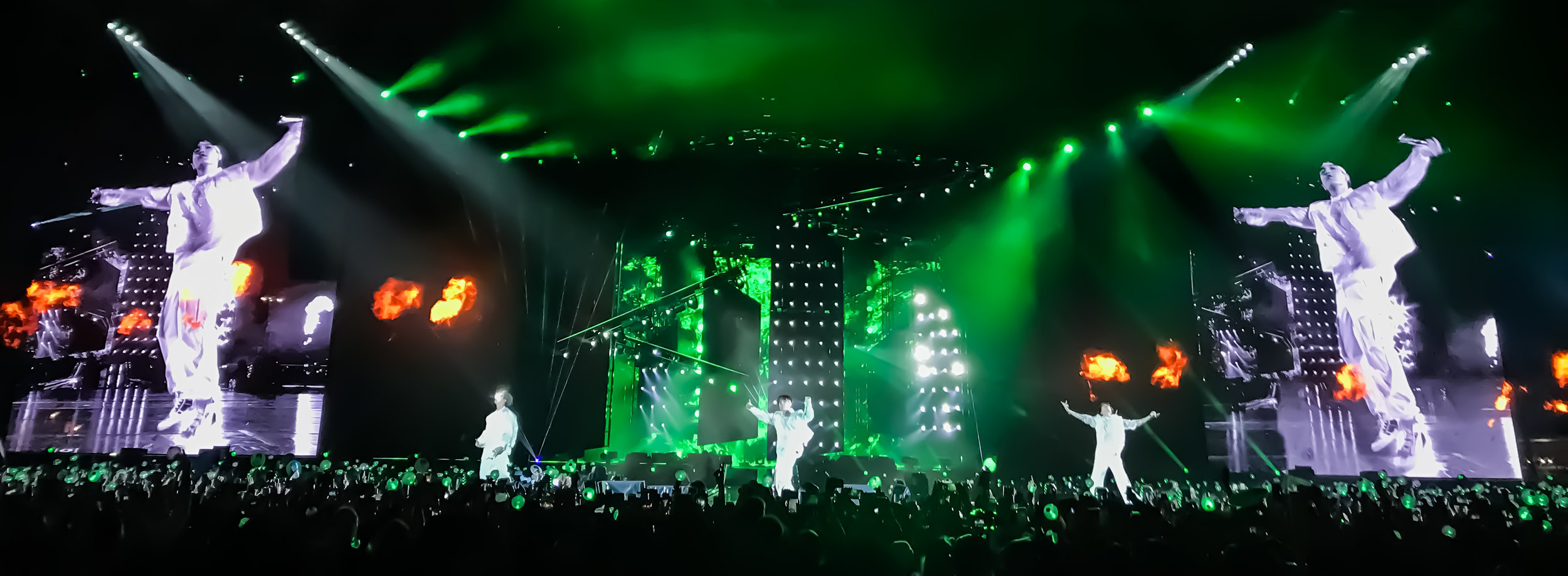
“Probably a dozen times we accidentally stomped on someone else’s game in the preseason while we were working out the kinks. It was long days, no days off, rethinking our philosophy daily, and no time to do everything yourself. We all had to trust each other and understand who was the subject matter expert of what. I don’t think you could build this chemistry with any group of people. We all went to college together; we are all very good friends; we talk about work and not work on a weekly basis. So, we are pretty close, even with that, we were often pushed close to our breaking points. I couldn’t see this working with any other combination of people I know – if I was in the mix at least.” JG
“Trust and leaning on each other’s strengths were also crucial to that process. I was the least 3D savvy on the project, but arguably had the most experience behind the console. Charles was the reverse. Hank and Jackson sat in the middle. So, we sort of arranged ourselves around a ‘trust me, this is the way,’ or ‘let’s have two of us go away and solve this problem and create a new protocol for the team’ philosophy – and that was successful. We also have worked together on many projects, so there weren’t workflow idiosyncrasies to work out, which was essential on a project of that scale.” JL
Given the multidisciplinary nature of many projects today, do you think most designers in this industry will become specialists, focusing on one element of design?
“I doubt it. The need for technology literacy is only going up. There are plenty of specialists such as animators or programmers but as a designer, personally, it looks like an arduous
path being a specialist.” JG
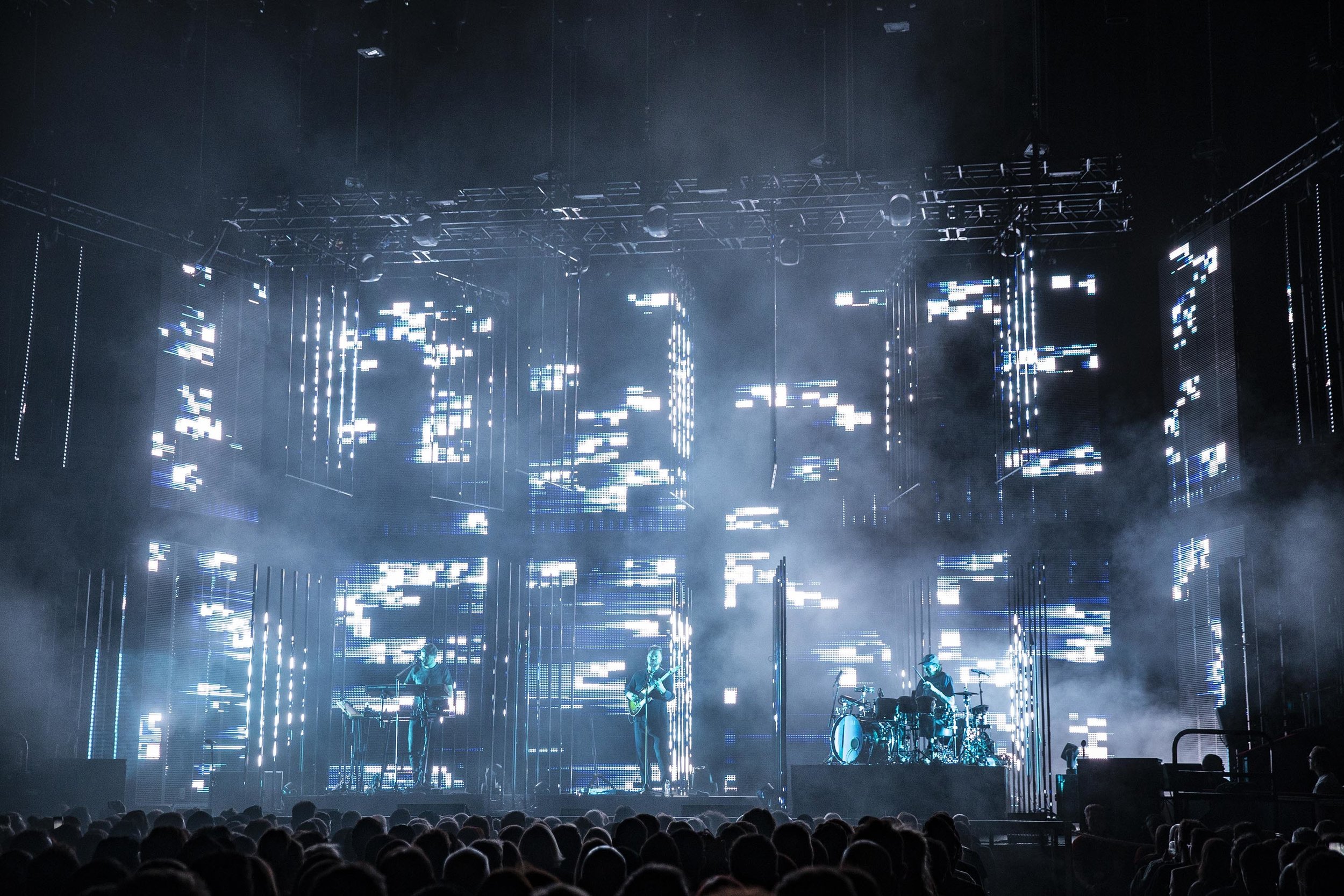
“Our strength as designers and the strength of our company is that we are just on the verge of being dangerous at a lot of things. Sure, we each individually “specialize” in one thing or another, or have a stronger interest in certain things, but being able to step back and see the 30,000 feet goal is really what we need to do as designers. Then it’s about helping to steer the ship and fulfill the creative using the right tools and hiring the right people.” JL
Looking at lighting, is there a technology that isn’t here yet, but that you would like to see happen? And, how about if we asked the same question about software?
“ It’s crazy that almost all stage lighting lives in a world confined by 512 8bit values at 44hz.” Michael Hankowsky
“The general A to D to A to D of our world is crazy, I agree. Especially when it comes to the control world, why are we still mixing and matching so many protocols and being so prescriptive about things. Surely we can abstract all this a bit more now when we know what all the lights can do.” JL
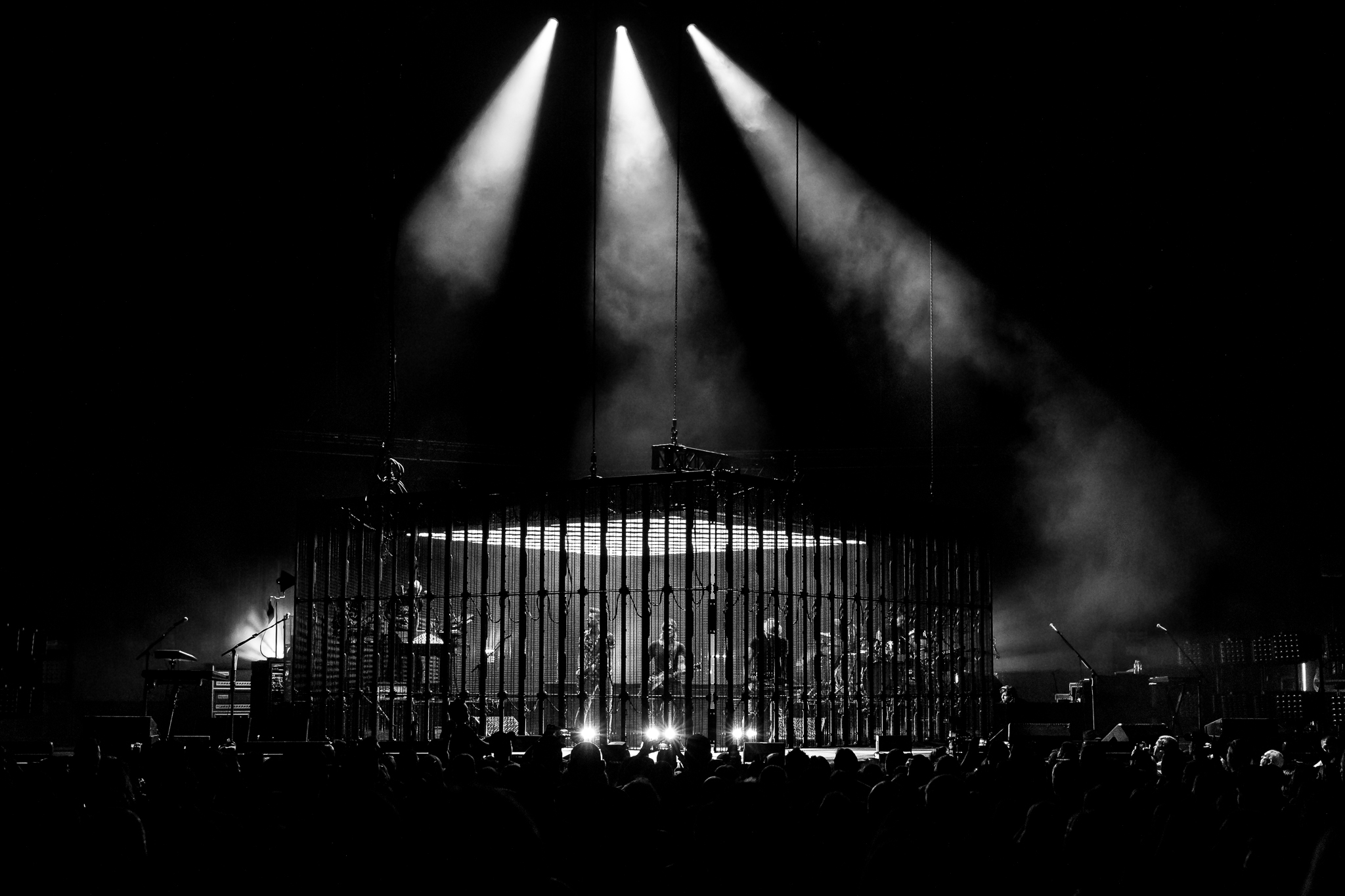
The pandemic has gone into its second year. Has living through this historic period changed the way you look at your work as a designer?
“I’m sure the answer is yes, but it’s probably too early to say. There is certainly a much greater appreciation for the sanctity of live events. The before and after will likely look a lot different but we are just getting into the after and beginning to navigate it.” JG
“I spend a lot more time on Zoom!” JL
On the Press Restart tour, we discussed earlier, you considered using projection video. Why didn’t you?
“Time money people or space. Probably one of those things in the end.” JL
What are your thoughts on projection video vs. LED walls?
“Sometimes projection is the right tool, just like screwdrivers are right for some projects but not others. We’ve found LED to be much more repeatable from a touring perspective and much more forgiving with any rogue lighting, which is why we often go with it. We love negative space in a design and video black from a projector doesn’t always help that cause.” JG
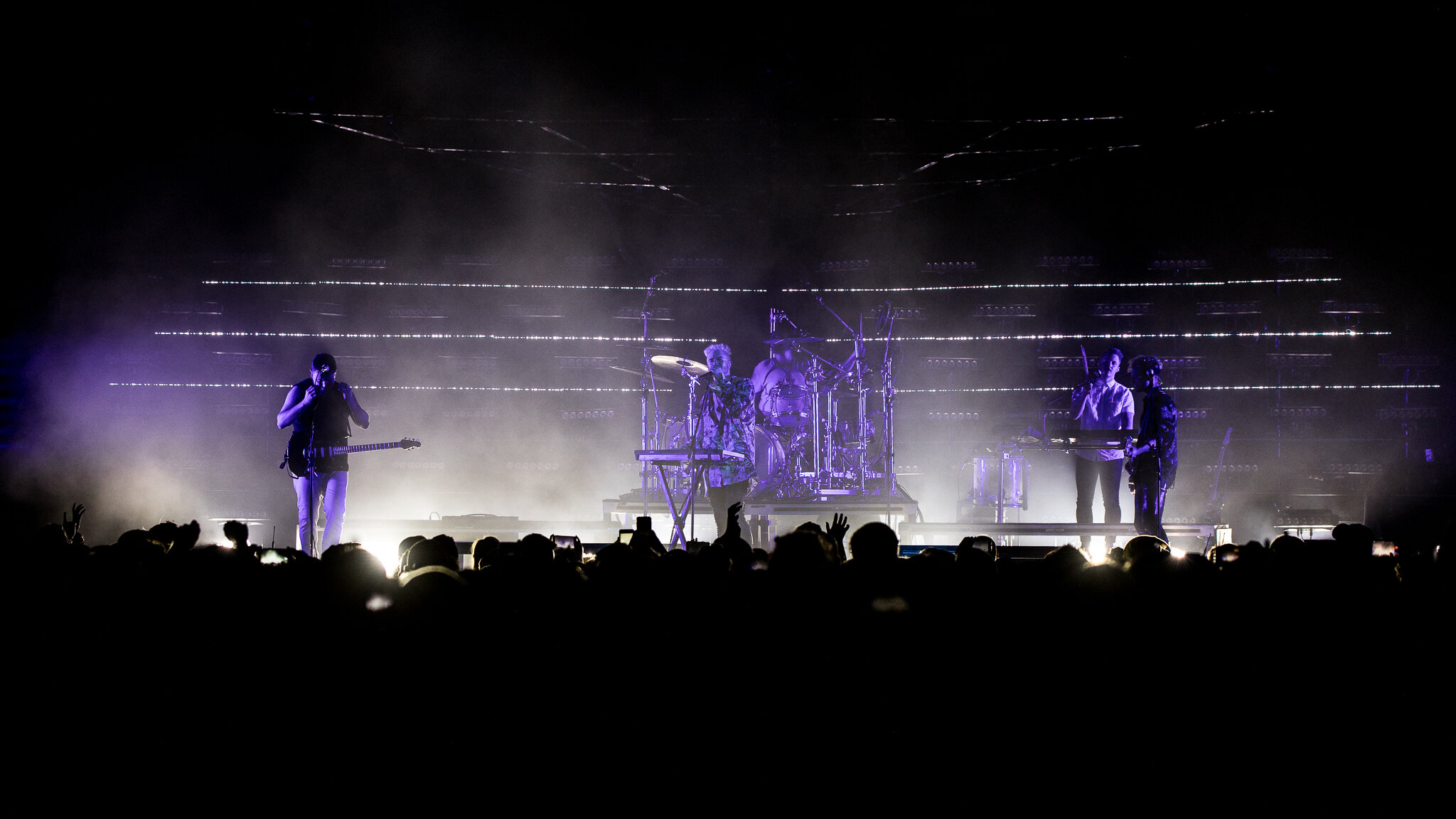
How do you get inspired at the start of a project?
“ We grew up doing theatre and at the core of our drive is a love for storytelling. Flashy concerts are fun but if we can tell a story or take the audience on a journey, that’s what gets us going. So, the more potential we see for that, the more excited and inspired we get.” JG
Not everyone likes all music to the same degree, so what do you do when you find a client’s music less than awe inspiring? How do you get psyched up creatively?
“It’s not all about music. As we’ve discussed, we love creating a journey for the audience so even if the music isn’t the most exciting, if we can find an opportunity for that, we are 100-percent in. Jeremy has pickier music tastes than I do. By the time I’ve heard a song 50 Times, I deliriously start enjoying it usually. JG
“ Sometimes it’s also the collaborators. If the PM is awesome to work with or the band are sweethearts, it’s easy to feel inspired to work on it, even if the material isn’t your actual personal cup of tea.” JL
If you had to answer in just one word each, what is your greatest strength as a designer? Your greatest weakness?
“ Risk-taking, realist.” JG
“ Blunt, narrow.” JL